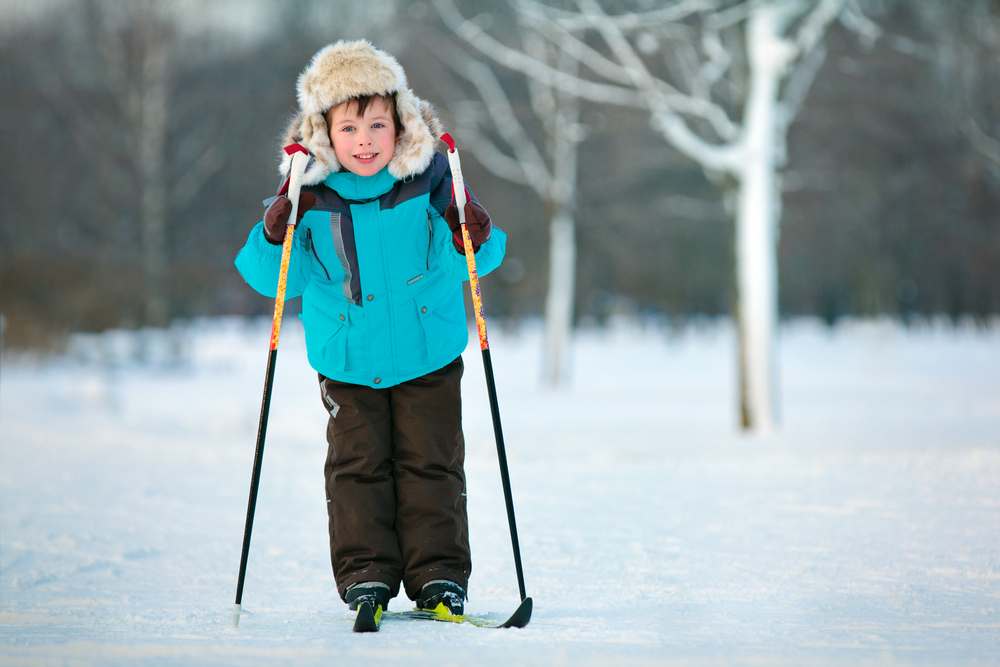A child’s imagination is endless, and it’s only magnified when snow is involved. Some kids make forts, while others turn the backyard into a snowball battleground. And let’s not forget to mention their favorite extreme winter sport: sledding.
When the winter snow starts to fly and your kids are scrambling to get outside, here are some tips to help keep them safe:
Shoes with good grip
Falls on ice can lead to a multitude of different injuries, from concussions to bone fractures. Layering your property with ice deicing material can help, but you can’t cover every place your child will walk. It never hurts to double check the treads of their boots to ensure they have adequate grip.
Sledding
You probably remember sledding as s kid, it was a blast! But most of us remember that one “big crash.” The U.S. Consumer Product Safety Commission shows there were over 52,000 sledding, snow tubing, and tobogganing-related hospital visit in 2014. You probably do not want your child joining these statistics, so here are some sledding safety tips to follow:
-
-
- Sit in a forward-facing position. Even if your child is a little adrenaline junky, it’s essential they follow this rule. Sitting forward allows sledders to bail off the sled and crash early to avoid upcoming danger—snow is softer than a tree.
- Make sure to sled in overly clear areas. If you have the slightest feeling that an object might be in the way, avoid the area and find a more suitable clearing.
- Children must be supervised at all times. As stated earlier, snow magnifies imagination. Think back to all the risky stunts you or your friends tried to pull while sledding as children. Let them have fun, but make sure they save the stunts for professionals.
- Lastly, suggest they use a helmet. You make your children wear a helmet when they ride bikes, it should apply to snow. Sleds can reach high speeds and you never know what objects lie under the thick snow. Plus, it helps keep your stocking cap on when you take a tumble.
-
Wear sunglasses and sunscreen
The sun reflects off the snow during the winter, leaving everyone susceptible to sunburn and skin damage. Apply sunscreen and wear sunglasses to protect yourself from the winter rays. Alternatively, you can wear ski goggles or dark lensed safety glasses that sort of mimic sunglasses.
Monitor weather conditions
Wind chill can make outside conditions feel colder than what the temperature says. While temperature is the standard for summer weather safety, wind chill is what is important during the winter. Your body doesn’t care if the temperature says 10 degrees Fahrenheit. If the windchill makes it feel like it’s 20 degrees below, that that’s how the body will respond.
For reference, the National Weather Service has a great chart that shows how long frostbite sets in during cold temperatures. Follow the link here: https://www.weather.gov/safety/cold-wind-chill-chart
Layer up
It’s important to wear multiple layers during the winter months, especially for kids, and always plan to dress warmer than expected. The human body heat’s up during exercise. If a child has too much warm clothes on and not enough layers to safely remove them, sweating may occur.
Sweat-drenched clothing is terrible during the winter months and can lead to hypothermia. If a child begins to sweat, it’s okay to remove a layer or two to prevent excessive sweating. Frostbite doesn’t occur from a lack of layers, but a lack of body heat. As long as the child’s body temperature is healthy, they will be fine.
That being said, it’s important to understand the stages and signs of hypothermia. https://www.mayoclinic.org/diseases-conditions/hypothermia/symptoms-causes/syc-20352682
Buddy system
Children should always use the buddy system. Not just to protect themselves from strangers, but incase of a winter emergency. Injuries from slips on ice, hazards under the snow, or unfrozen water are just a few of the potential hazards they could face. Encourage the buddy system and have a plan set in place incase anything goes south.

